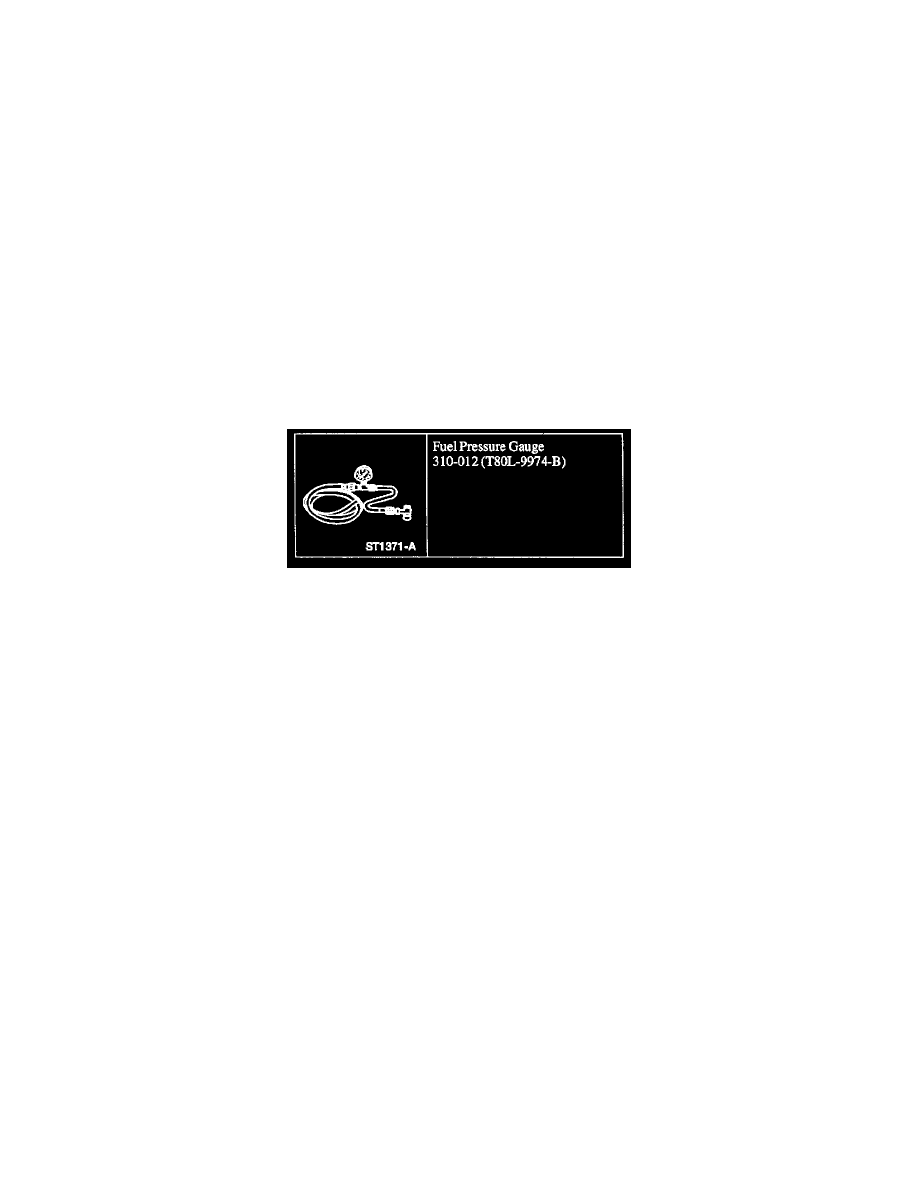Mustang GT V8-4.6L SOHC VIN X (1998)

Fuel Return Line: Service and Repair
NOTE: Fuel and vapor tubes are not repairable and must be replaced. Do not splice fuel or vapor tubes as repair will not comply with the clean air act
regulations.
WARNING: FUEL SUPPLY LINES ON ALL VEHICLES EQUIPPED WITH FUEL INJECTED ENGINES REMAIN PRESSURIZED FOR
LONG PERIODS OF TIME AFTER ENGINE SHUTDOWN. FUEL SYSTEM PRESSURE MUST BE RELIEVED PRIOR TO FUEL
SYSTEM SERVICE TO PREVENT POSSIBLE INJURY. REFER TO FUEL PRESSURE RELEASE.
The individual stainless steel tubes of the fuel and vapor return tube are secured together by the manufacturer and are supplied as an assembly. The fuel
and vapor return tube is attached to the body with locators and screws. The fuel and vapor return tube is connected to the fuel filter and base and
evaporative emissions canister using push-connects. Connections to the engine are made with spring lock couplings.
CAUTION: The plastic fuel tubes can be damaged by torches, welding sparks, grinding and other operations which involve heat and high temperatures.
If any service operation will be used which involves heat and high temperatures, locate all fuel system components especially the plastic fuel tubes to
make sure they will not be damaged. It is recommended that the plastic fuel tubes be removed from the vehicle if a torch or high heat producing
equipment is to be used for service in the following areas:
-
exhaust or suspension components in proximity to fuel tubes.
-
floorpan under vehicle and inside the passenger compartment (RH side).
-
rocker panel (RH side).
-
underbody frames, rails and crossmembers (RH side).
-
dash panel, under vehicle or inside the passenger compartment (lower RH side).
-
front or rear wheel house/fender apron (RH side).
Fuel Pressure Gauge
REMOVAL
1. Perform fuel pressure release procedure.
2. Drain fuel from fuel tank.
3. Disconnect fuel and vapor return tube from engine.
4. Raise vehicle on hoist.
5. Disconnect the push connect fittings from the tubes at the fuel tank.
6. Remove the RH front fender liner from inside the front wheel housing if required to expose the fuel and vapor return tube.
7. Cut the push pins off between each plastic wrap-around clip and the body. Remove the screws from any wrap-around clips. Drill the pop rivets out
of any clips. All clips can be reused.
INSTALLATION
1. Secure the fuel and vapor return tube assembly to the underbody near the center of the vehicle using a clip/retainer and pop-rivet. Refer to the
system illustration for the correct location for this first clip.
2. Moving rearward, install all additional clips as shown on the system illustration. The wrap-around clips must be secured with new push-in pins. All
clips must be located between the paired upsets located on the fuel tube.
3. Route the fuel and vapor return tube forward to the front structure and into the RH front wheel housing.
4. Install the special metal clip and secure it with a screw to retain the fuel and vapor return tube in the depression under the front structure rearward
of the wheel housing.
NOTE: All clips must be located between the paired upsets in the fuel and vapor return tube.
5. Connect the push connect fittings to the engine tubes at the front of the vehicle and to the tubes at the fuel tank at the rear of the vehicle.
6. Lower vehicle.
7. Return the drained fuel to the fuel tank.
8. Check the fuel and vapor return tube and push connect fittings for proper routing and connections. The push connect fittings must be installed so
that the second bead on the tube is inside the end of the fitting. Pull back on the fitting to make sure that it is completely installed.
9. Install the fender liner in the RH front wheel housing.
10. Install Fuel Pressure Gauge 310-012 (T80L-9974-B) on the fuel pressure relief valve. Turn ignition switch from OFF to RUN position for three
seconds. Turn ignition switch for three seconds repeatedly (5 to 10 times) until pressure gauge shows at least 241 kPa (35 psi). Check for leaks at
fittings.
